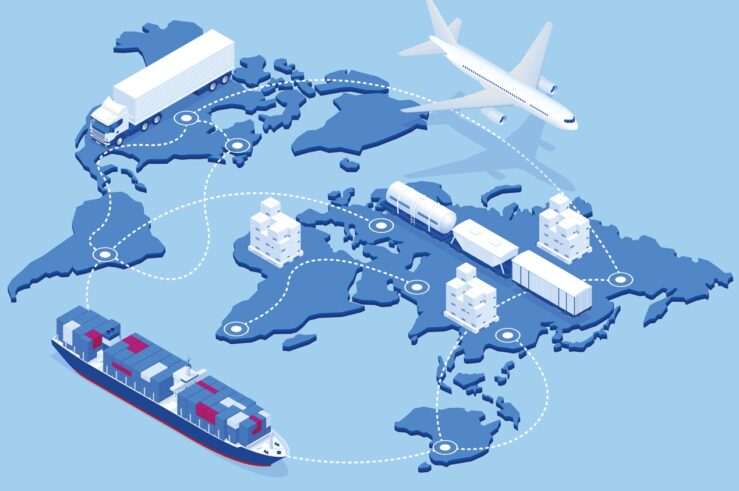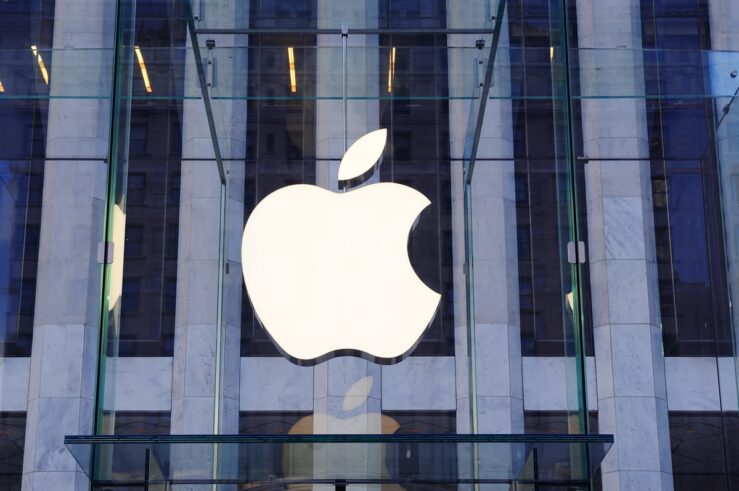
Barry Schwartz’s seminal work “The Paradox of Choice” has received substantial attention since its publication nearly 20 years ago. In it, Schwartz argued that, faced with an ever-increasing plethora of products to choose from, consumers often feel overwhelmed and seek to limit the number of choices they must make.
In today’s online digital economy, a possible response to this problem is for digital platforms to use consumer data to present consumers with a “manageable” array of choices and thereby simplify their product selection. Appropriate “curation” of product-choice options may substantially benefit consumer welfare, provided that government regulators stay out of the way.
New Research
In a new paper in the American Economic Review, Mark Armstrong and Jidong Zhou—of Oxford and Yale universities, respectively—develop a theoretical framework to understand how companies compete using consumer data. Their findings conclude that there is, in fact, an impact on consumer, producer, and total welfare when different privacy regimes are enacted to change the amount of information a company can use to personalize recommendations.
The authors note that, at least in theory, there is an optimal situation that maximizes total welfare (scenario one). This is when a platform can aggregate information on consumers to such a degree that buyers and sellers are perfectly matched, leading to consumers buying their first-best option. While this can result in marginally higher prices, understandably leading to higher welfare for producers, search and mismatch costs are minimized by the platform, leading to a high level of welfare for consumers.
The highest level of aggregate consumer welfare comes when product differentiation is minimized (scenario two), leading to a high number of substitutes and low prices. This, however, comes with some level of mismatch. Since consumers are not matched with any recommendations, search costs are high and introduce some error. Some consumers may have had a higher level of welfare with an alternative product, but do not feel the negative effects of such mismatch because of the low prices. Therefore, consumer welfare is maximized, but producer welfare is significantly lower.
Finally, the authors suggest a “nearly total welfare” optimal solution in suggesting a “top two-best” scheme (scenario three), whereby consumers are shown their top two best options without explicit ranking. This nearly maximizes total welfare, since consumers are shown the best options for them and, even if the best match isn’t chosen, the second-best match is close in terms of welfare.
Implications
In cases of platform data aggregation and personalization, scenarios one, two, and three can be represented as different privacy regimes.
Scenario one (a personalized-product regime) is akin to unlimited data gathering, whereby platforms can use as much information as is available to perfectly suggest products based on revealed data. From a competition perspective, interfirm competition will tend to decrease under this regime, since product differentiation will be accentuated, and substitutability will be masked. Since one single product will be shown as the “correct” product, the consumer will not want to shift to a different, welfare-inferior product and firms have incentive to produce ever more specialized products for a relatively higher price. Total welfare under this regime is maximized, with producers using their information to garner a relatively large share of economic surplus. Producers are effectively matched with consumers, and all gains from trade are realized.
Scenario two (a data-privacy regime) is one of near-perfect data privacy, whereby the platform is only able to recommend products based on general information, such as sales trends, new products, or product specifications. Under this regime, competition is maximized, since consumers consider a large pool of goods to be close substitutes. Differences in offered products are downplayed, which has the tendency to reduce prices and increase quality, but at the tradeoff of some consumer-product mismatch. For consumers who want a general product and a low price, this is likely the best option, since prices are low, and competition is high. However, for consumers who want the best product match for their personal use case, they will likely undertake search costs, increasing their opportunity cost of product acquisition and tending toward a total cost closer to the cost under a personalized-product regime.
Scenario three (a curated-list regime) represents defined guardrails surrounding the display of information gathered, along the same lines as the personalized-product regime. Platforms remain able to gather as much information as they desire in order to make a personalized recommendation, but they display an array of products that represent the first two (or three to four, with tighter anti-preference rules) best-choice options. These options are displayed without ranking the products, allowing the consumer to choose from a curated list, rather than a single product. The scenario-three regime has two effects on the market:
- It will tend to decrease prices through increased competition. Since firms can know only which consumers to target, not which will choose the product, they have to effectively compete with closely related products.
- It will likely spur innovation and increase competition from nascent competitors.
From an innovation perspective, firms will have to find better methods to differentiate themselves from the competition, increasing the probability of a consumer acquiring their product. Also, considering nascent competitors, a new product has an increased chance of being picked when ranked sufficiently high to be included on the consumer’s curated list. In contrast, the probability of acquisition under scenario one’s personalized-product regime is low, since the new product must be a better match than other, existing products. Similarly, under scenario two’s data-privacy regime, there is so much product substitutability in the market that the probability of choosing any one new product is low.
Below is a list of how the regimes stack up:
- Personalized-Product: Total welfare is maximized, but prices are relatively higher and competition is relatively lower than under a data-privacy regime.
- Data-Privacy: Consumer welfare and competition are maximized, and prices are theoretically minimized, but at the cost of product mismatch. Consumers will face search costs that are not reflected in the prices paid.
- Curated-List: Consumer welfare is higher and prices are lower than under a personalized-product regime and competition is lower than under a data-privacy regime, but total welfare is nearly optimal when considering innovation and nascent-competitor effects.
Policy in Context
Applying these theoretical findings to fashion administrable policy prescriptions is understandably difficult. A far easier task is to evaluate the welfare effects of actual and proposed government privacy regulations in the economy. In that light, I briefly assess a recently enacted European data-platform privacy regime and U.S. legislative proposals that would restrict data usage under the guise of bans on “self-preferencing.” I then briefly note the beneficial implications of self-preferencing associated with the two theoretical data-usage scenarios (scenarios one and three) described above (scenario two, data privacy, effectively renders self-preferencing ineffective).
GDPR
The European Union’s General Data Protection Regulation (GDPR)—among the most ambitious and all-encompassing data-privacy regimes to date—has significant negative ramifications for economic welfare. This regulation is most like the second scenario, whereby data collection and utilization are seriously restricted.
The GDPR diminishes competition through its restrictions on data collection and sharing, which reduce the competitive pressure platforms face. For platforms to gain a complete profile of a consumer for personalization, they cannot only rely on data collected on their platform. To ensure a level of personalization that effectively reduces search costs for consumers, these platforms must be able to acquire data from a range of sources and aggregate that data to create a complete profile. Restrictions on aggregation are what lead to diminished competition online.
The GDPR grants consumers the right to choose both how their data is collected and how it is distributed. Not only do platforms themselves have obligations to ensure consumers’ wishes are met regarding their privacy, but firms that sell data to the platform are obligated to ensure the platform does not infringe consumers’ privacy through aggregation.
This creates a high regulatory burden for both the platform and the data seller and reduces the incentive to transfer data between firms. Since the data seller can be held liable for actions taken by the platform, this significantly increases the price at which the data seller will transfer the data. By increasing the risk of regulatory malfeasance, the cost of data must now incorporate some risk premium, reducing the demand for outside data.
This has the effect of decreasing the quality of personalization and tilting the scales toward larger platforms, who have more robust data-collection practices and are able to leverage economies of scale to absorb high regulatory-enforcement costs. The quality of personalization is decreased, since the platform has incentive to create a consumption profile based on activity it directly observes without considering behavior occurring outside of the platform. Additionally, those platforms that are already entrenched and have large user bases are better able to manage the regulatory burden of the GDPR. One survey of U.S. companies with more than 500 workers found that 68% planned to spend between $1 and $10 million in upfront costs to prepare for GDPR compliance, a number that will likely pale in comparison to the long-term compliance costs. For nascent competitors, this outlay of capital represents a significant barrier to entry.
Additionally, as previously discussed, consumers derive some benefit from platforms that can accurately recommend products. If this is the case, then large platforms with vast amounts of accumulated, first-party data will be the consumers’ destination of choice. This will tend to reduce the ability for smaller firms to compete, simply because they do not have access to the same scale of data as the large platforms when data cannot be easily transferred between parties.
Self–Preferencing
Claims of anticompetitive behavior by platforms are abundant (e.g., see here and here), and they often focus on the concept of self-preferencing. Self-preferencing refers to when a company uses its economies of scale, scope, or a combination of the two to offer products at a lower price through an in-house brand. In decrying self-preferencing, many commentators and politicians point to an alleged “unfair advantage” in tech platforms’ ability to leverage data and personalization to drive traffic toward their own products.
It is far from clear, however, that this practice reduces consumer welfare. Indeed, numerous commentaries (e.g., see here and here) circulated since the introduction of anti-preferencing bills in the U.S. Congress (House; Senate) have rejected the notion that self-preferencing is anti-competitive or anti-consumer.
There are good reasons to believe that self-preferencing promotes both competition and consumer welfare. Assume that a company that manufactures or contracts for its own, in-house products can offer them at a marginally lower price for the same relative quality. This decrease in price raises consumer welfare. The in-house brand’s entrance into the market represents a potent competitive threat to firms already producing products, who in turn now have incentive to lower their own prices or raise the quality of their own goods (or both) to maintain their consumer base. This creates even more consumer welfare, since all consumers, not just the ones purchasing the in-house goods, are better off from the entrance of an in-house brand.
It therefore follows that the entrance of an in-house brand and self-preferencing in the data-utilizing regimes discussed above has the potential to enhance consumer welfare.
In general, the use of data analysis on the platform can allow for targeted product entrance into certain markets. If the platform believes it can make a product of similar quality for a lower price, then it will enter that market and consumers will be able to choose a comparable product for a lower price. (If the company does not believe it is able to produce such a product, it will not enter the market with an in-house brand, and consumer welfare will stay the same.) Consumer welfare will further rise as firms producing products that compete against the in-house brand will innovate to compete more effectively.
To be sure, under a personalized-product regime (scenario one), platforms may appear to have an incentive to self-preference to the detriment of consumers. If consumers trust the platform to show the greatest welfare-producing product before the emergence of an in-house brand, the platform may use this consumer trust to its advantage and suggest its own, potentially consumer-welfare-inferior product instead of a competitor’s welfare-superior product. In such a case, consumer welfare may decrease in the face of an in-house brand’s entrance.
The extent of any such welfare loss, however, may be ameliorated (or eliminated entirely) by the platform’s concern that an unexpectedly low level of house-brand product quality will diminish its reputation. Such a reputational loss could come about due to consumer disappointment, plus the efforts of platform rivals to highlight the in-house product’s inferiority. As such, the platform might decide to enhance the quality of its “inferior” in-house offering, or refrain from offering an in-house brand at all.
A curated-list regime (scenario three) is unequivocally consumer-welfare beneficial. Under such a regime, consumers will be shown several more options (a “manageable” number intended to minimize consumer-search costs) than under a personalized-product regime. Consumers can actively compare the offerings from different firms to determine the correct product for their individual use. In this case, there is no incentive to self-preference to the detriment of the consumer, as the consumer is able to make value judgements between the in-house brand and the alternatives.
If the in-house brand is significantly lower in price, but also lower in quality, consumers may not see the two as interchangeable and steer away from the in-house brand. The same follows when the in-house brand is higher in both price and quality. The only instance where the in-house brand has a strong chance of success is when the price is lower than and the quality is greater than competing products. This will tend to increase consumer welfare. Additionally, the entrance of consumer-welfare-superior products into a competitive market will encourage competing firms to innovate and lower prices or raise quality, again increasing consumer welfare for all consumers.
Conclusion
What effects do digital platform-data policies have on consumer welfare? As a matter of theory, if providing an increasing number of product choices does not tend to increase consumer welfare, then do reductions in prices or increases in quality? What about precise targeting of personal-product choices? How about curation—the idea that a consumer raises his or her level of certainty by outsourcing decision-making to a platform that chooses a small set of products for the consumer’s consideration at any given moment? Apart from these theoretical questions, is the current U.S. legal treatment of platform data usage doing a generally good job of promoting consumer welfare? Finally, considering this overview, are new government interventions in platform data policy likely to benefit or harm consumers?
Recently published economic research develops theoretical scenarios that demonstrate how digital platform curation of consumer data may facilitate welfare-enhancing consumer-purchase decisions. At least implicitly, this research should give pause to proponents of major new restrictions of platform data usage.
Furthermore, a review of actual and proposed regulatory restrictions underscores the serious welfare harm of government meddling in digital platform-data usage.
After the first four years of GDPR, it is clear that there have been significant negative unintended consequences stemming from omnibus privacy regulation. Competition has decreased, regulatory barriers to entry have increased, and consumers are marginally worse off. Since companies are less able and willing to leverage data in their operations and service offerings—due in large part to the risk of hefty fines—they are less able to curate and personalize services to consumers.
Additionally, anti-preferencing bills in the United States threaten to suppress the proper functioning of platform markets and reduce consumer welfare by making the utilization of data in product-market decisions illegal. More research is needed to determine the aggregate welfare effects of such preferencing on platforms, but all early indications point to the fact that consumers are better off when an in-house brand enters the market and increases competition.
Furthermore, current U.S. government policy, which generally allows platforms to use consumer data freely, is good for consumer welfare. Indeed, the consumer-welfare benefits generated by digital platforms, which depend critically on large volumes of data, are enormous. This is documented in a well-reasoned Harvard Business Review article (by an MIT professor and his student) that utilizes online choice experiments based on digital-survey techniques.
The message is clear. Governments should avoid new regulatory meddling in digital platform consumer-data usage practices. Such meddling would harm consumers and undermine the economy.




